What is Email Automation? (Tips, Flows, Tools)
Casey O'Connor
Email automation refers to the design and implementation of time- or action-triggered rules that dictate when and to whom pre-written emails are sent.
Email automation software allows salespeople to schedule, send, and track strategic, highly personalized email messages and campaigns on a mass scale.
In this article, we’ll go over everything you need to know about email automation, including how it works, why it’s so important for your business, and how to maximize its impact on your sales process.
Here’s what we’ll cover:
- The Benefits of Email Automation
- Email Automation Tips
- 8 Automated Email Flows to use
- Email Automation FAQ
- Ready to Automate Your Email Workflow?
Email Automation
Email automation uses predetermined rules — most often triggered by either a lapse of time (e.g., three days with no response triggers a follow-up email) or an action (e.g., a prospect downloads a whitepaper and triggers an email with a webinar invite) — to send personalized messages to prospects and customers at strategic intervals.
Although email is extremely commonplace and very much a part of our everyday lives, its importance in sales cannot be understated. A McKinsey study found that email is 40x more effective at securing new sales than any of the most popular social media platforms.
Unfortunately, the popularity of email also presents a problem for salespeople:
- There are over 300 billion emails sent worldwide on a daily basis.
- Over 50% of them are spam.
- Only about 9% of sales emails are opened and read.
Email automation software helps solve this problem. It helps sales professionals design, execute, and analyze virtually limitless workflows and email campaigns simultaneously so that the outreach strategy can be optimized to reach the maximum number of people.
Salespeople use email automation software to send automated emails like:
- A welcome series for new subscribers
- Product recommendations
- Follow-ups and reminders
- Abandoned cart prompts
Email automation saves salespeople countless hours of otherwise wasted time. It provides a streamlined, powerfully capable way to send the right message to the right person at the right time with ease.
The Benefits of Email Automation – Why Should You Use It?
Email automation is a non-negotiable tool for any sales team that wants to optimize their performance. Its impact and benefits affect virtually every stage of the sales pipeline.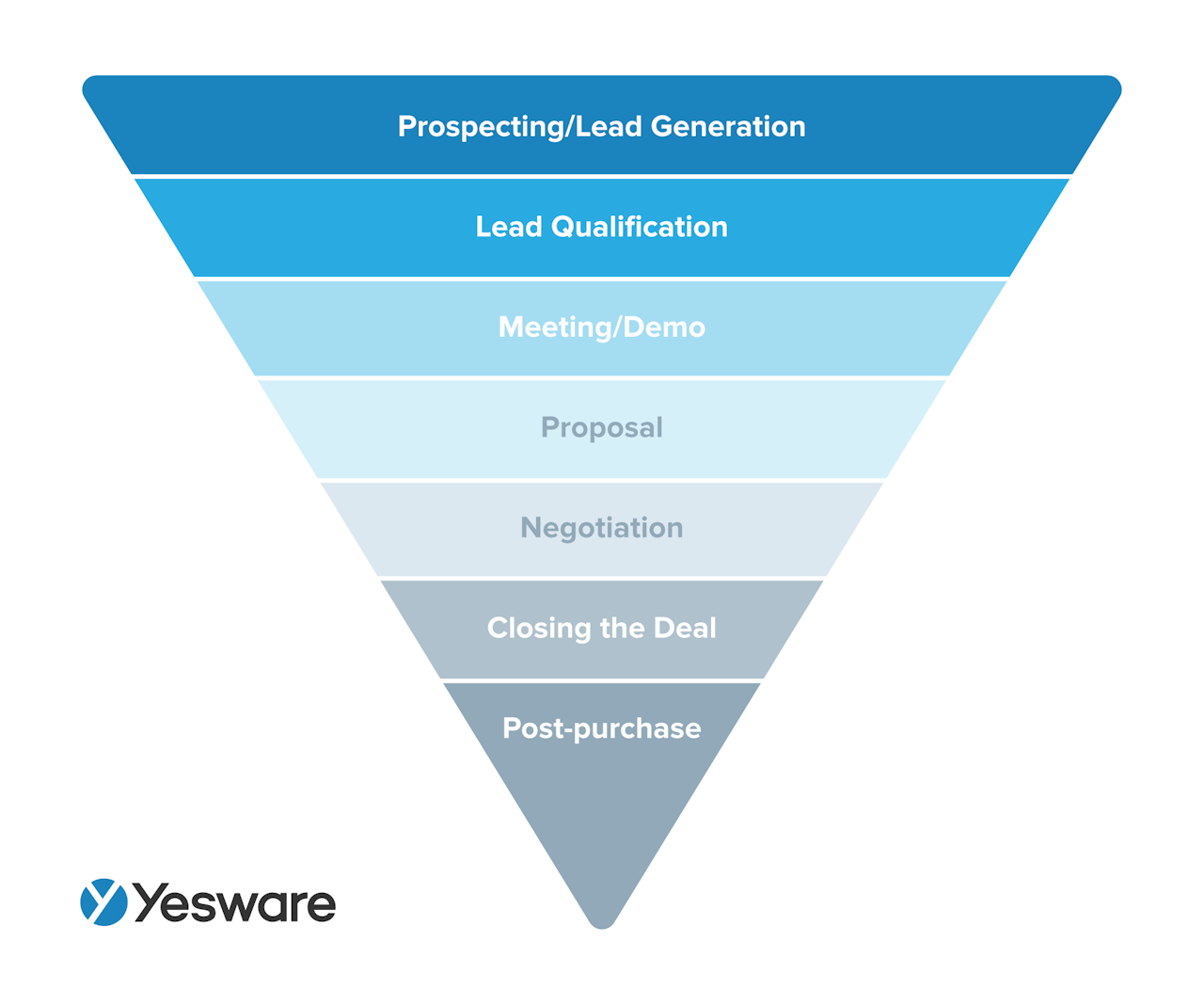 The numbers don’t lie: sales teams that use email automation have a conversion rate that’s 359% higher than those who don’t.
The numbers don’t lie: sales teams that use email automation have a conversion rate that’s 359% higher than those who don’t.
Here are some of the biggest benefits of using email automation in your sales process.
Automates Administrative Work
Did you know that salespeople spend only about one-third of their work time completing revenue-generating sales activities?
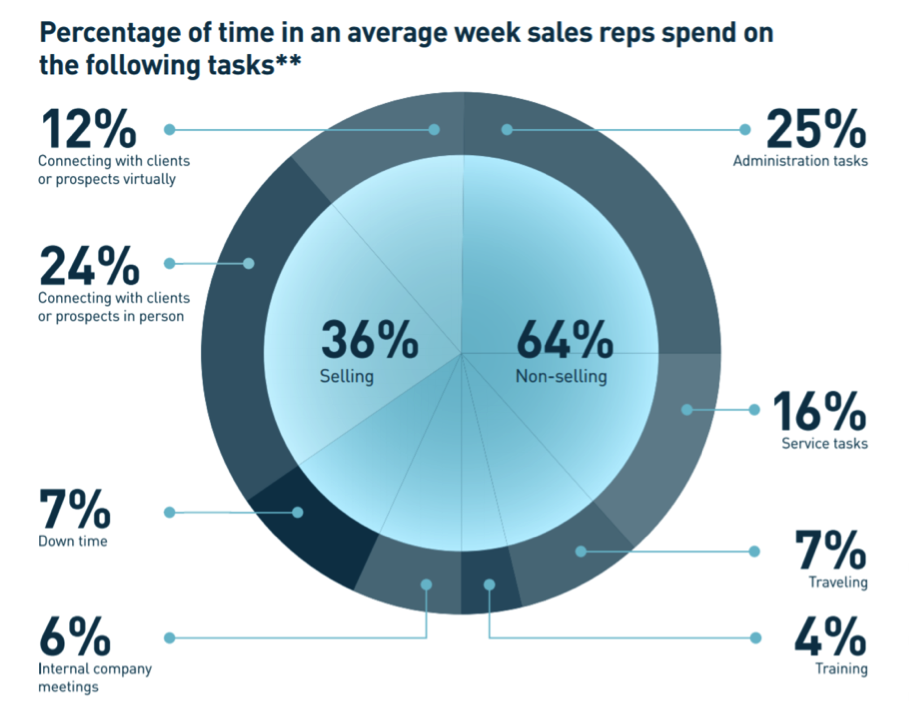
The majority of their time is actually eaten up by administrative tasks and ones that could otherwise be automated with the right tools — like email. Email automation software alleviates the burden and frees up more time for sales reps to interact with prospects.
Strengthens Your Brand
One of the best parts about email automation is that it’s strategic and predictable. Marketing and sales should take advantage of the opportunity to align and develop their messaging in a way that strengthens the brand voice.
Email automation software also helps salespeople and marketers track and analyze their messages. They can use the insight from these analytics to help them determine what brand messaging resonates most (and generates the most loyalty) with their customer base.
Helps You Learn More About Your Customers
Email automation analytics also helps salespeople pinpoint the exact pain points, goals, and motivators that move the needle most with their target audience.
Email automation software can track engagement rates on any number of metrics, including subject line, send time, content attachments, and more. This kind of data helps salespeople and marketers refine and optimize their ICPs and buyer personas.
It also helps them easily create trusting, value-driven relationships by staying connected with prospects and customers organically and in a timely manner.
Allows for Strategic Messaging
Email automation software takes the burden off of salespeople of managing the many moving pieces of the sales cycle.
These platforms take care of the scheduling, sending, and tracking of email messages so that salespeople can optimize their sales strategy using a data-driven decision-making process.
Email automation software makes it easy to execute sophisticated strategies for every segment of your sales pipeline, from hot leads that are eager to sign, to possible yeses that need slow and careful nurturing.
Personalize Your Outreach
Perhaps one of the biggest benefits of using email automation in your sales strategy is that it allows salespeople to completely personalize their messaging content and outreach strategy.
The importance of this cannot be understated. Personalized messaging at scale is no longer a nice-to-have; it’s a requirement for sales teams that want to optimize their resources and grow their business:
- 90% of buyers report that they notice and appreciate personalized outreach
- 91% of buyers are more likely to buy from businesses that make the effort to personalize their messages
- The easiest and most popular way to add personalization to the sales process is through email
Email automation helps salespeople stay competitive and connected in a digital-forward, data-driven sales world.
Email Automation Tips
Many email automation software platforms are relatively intuitive and easy to get up and running.
That being said, there are a number of best practices that sales teams should follow that will help them get the most out of this kind of tool.
Consider the Timing
Although there is no “right or wrong” time to send an email, there are definitely times that are better (and worse) for having your message opened and read.
According to extensive Yesware data, the best days of the week to send an email that requires a response are Mondays and Tuesdays.
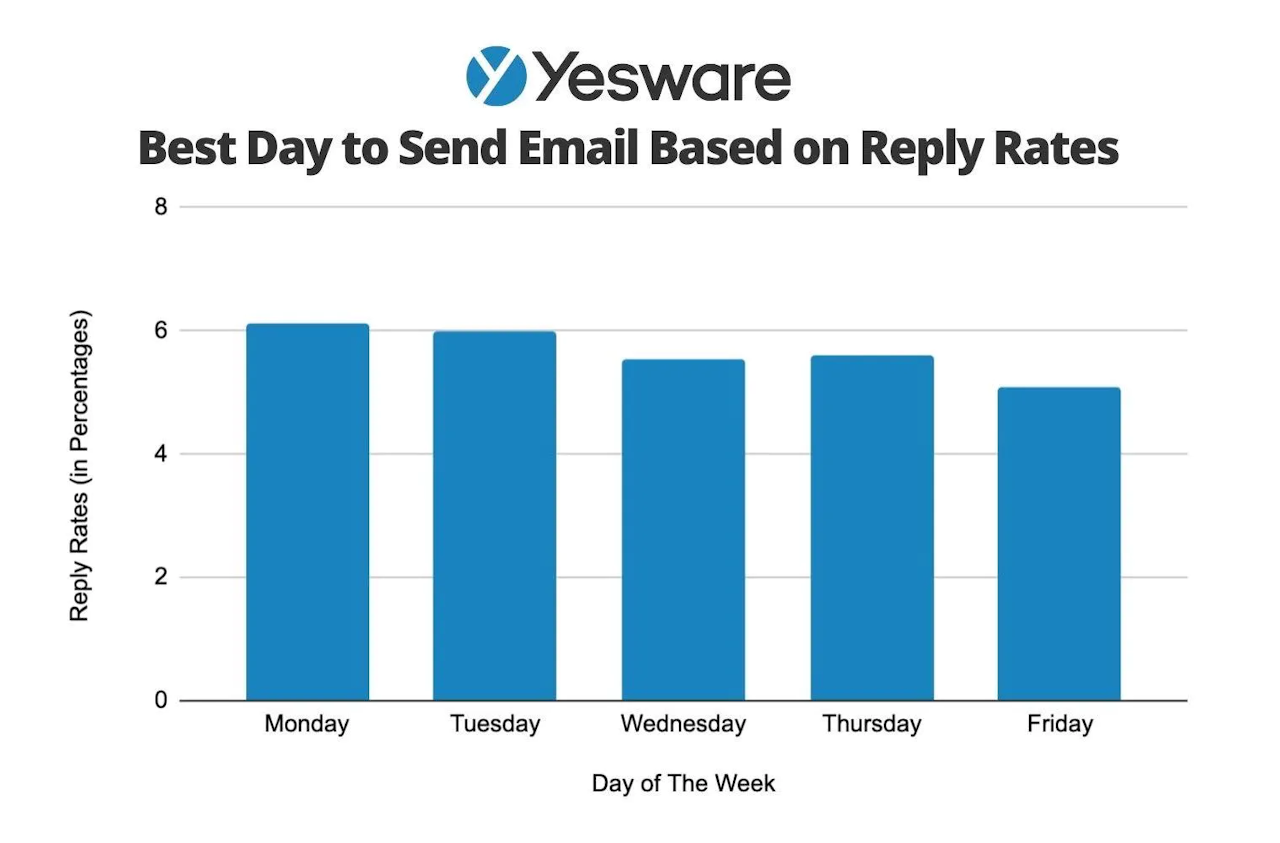 Furthermore, the best time to send emails is either 1:00pm or 11:00am.
Furthermore, the best time to send emails is either 1:00pm or 11:00am.
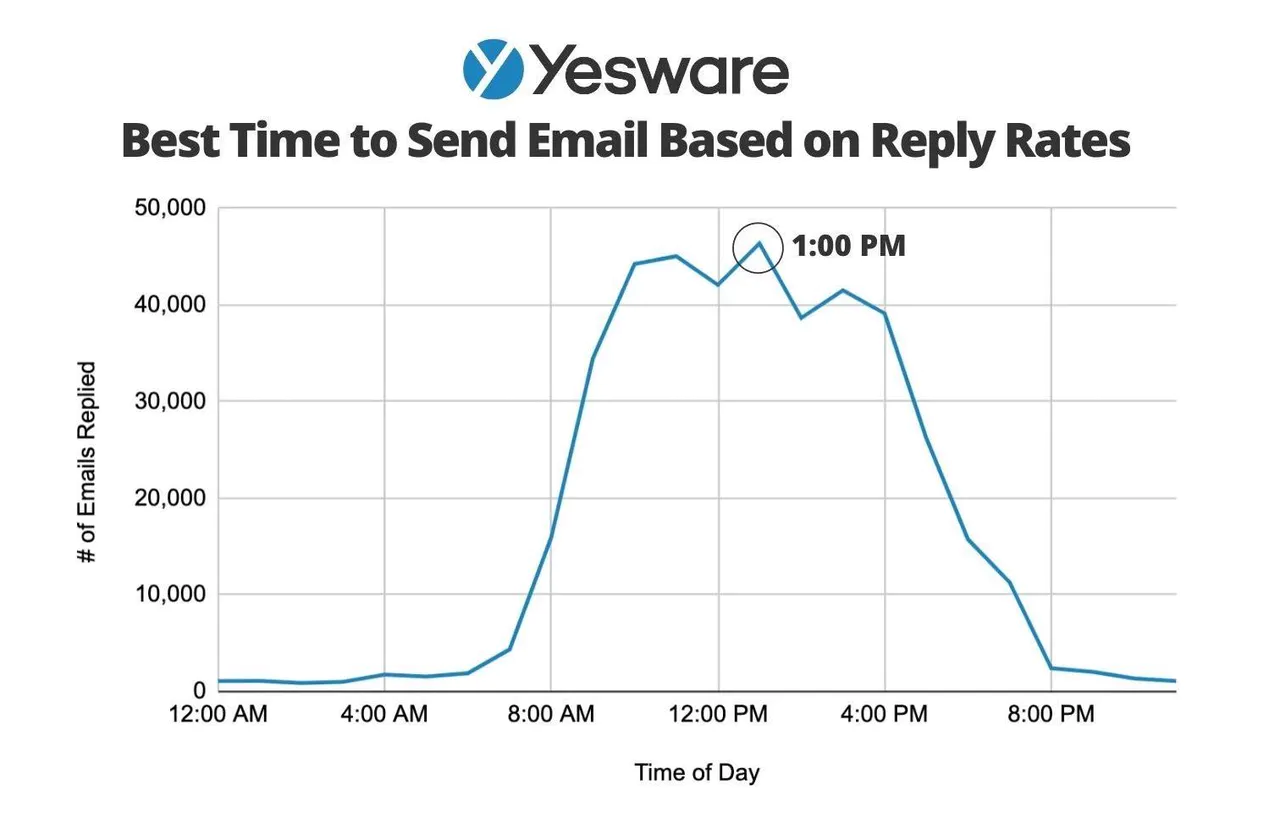
Email automation is a fantastic tool because it makes easy work of scheduling and sending your emails at exactly the right time.
Perform A/B Testing
Email automation software can help marketers and salespeople determine their best messaging strategy through careful A/B testing.
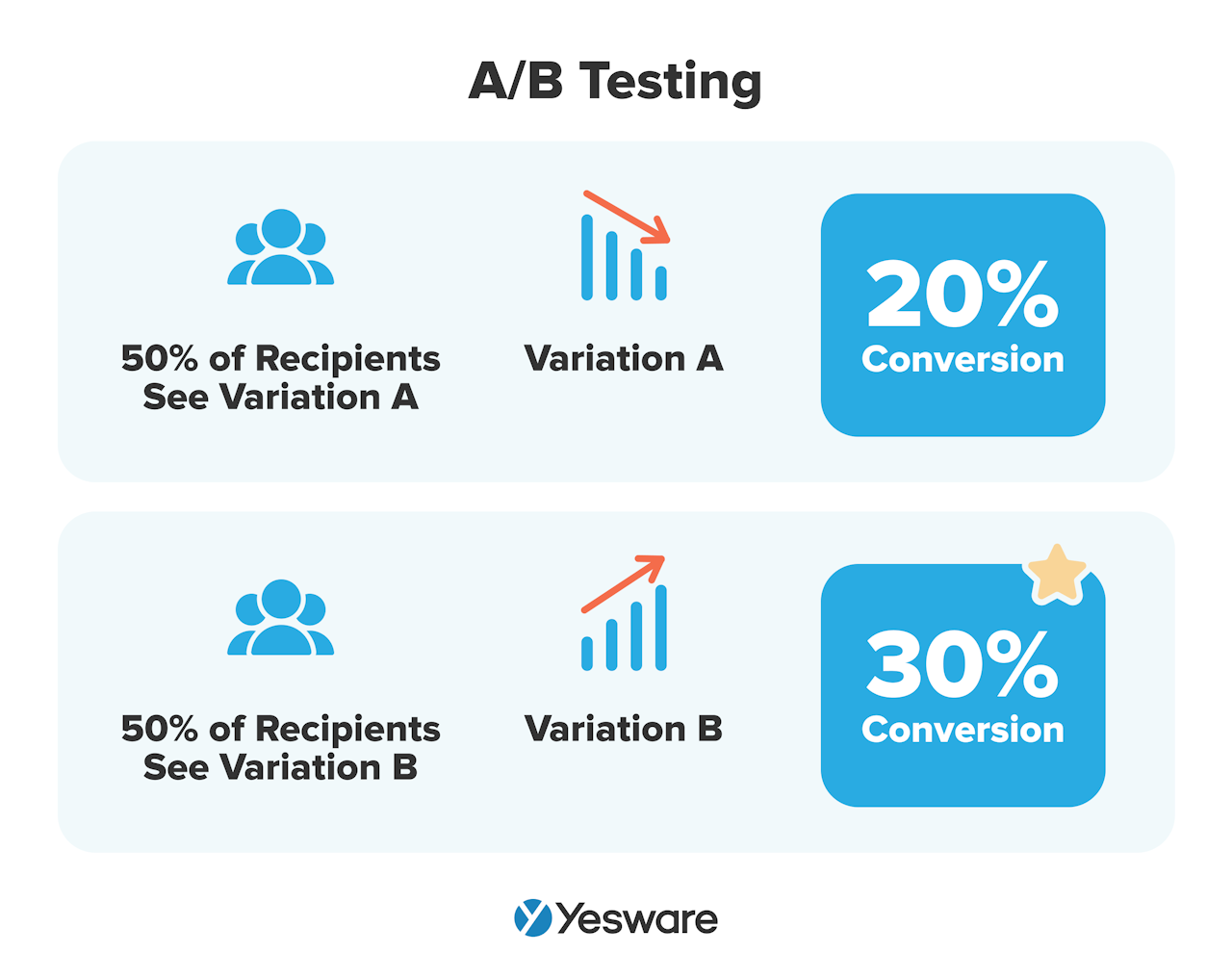
A/B testing allows users to send two variations of the same thing. Salespeople use it to test the effectiveness of things like subject lines, email content, attachments, and calls to action. The email automation software tracks engagement rates for each variation and reports on the higher-converting option.
Create Drip Campaigns
Sales reps can use email automation software to segment their contacts and create drip campaigns for each group.
Drip campaigns allow sales reps to further differentiate and personalize their outreach.
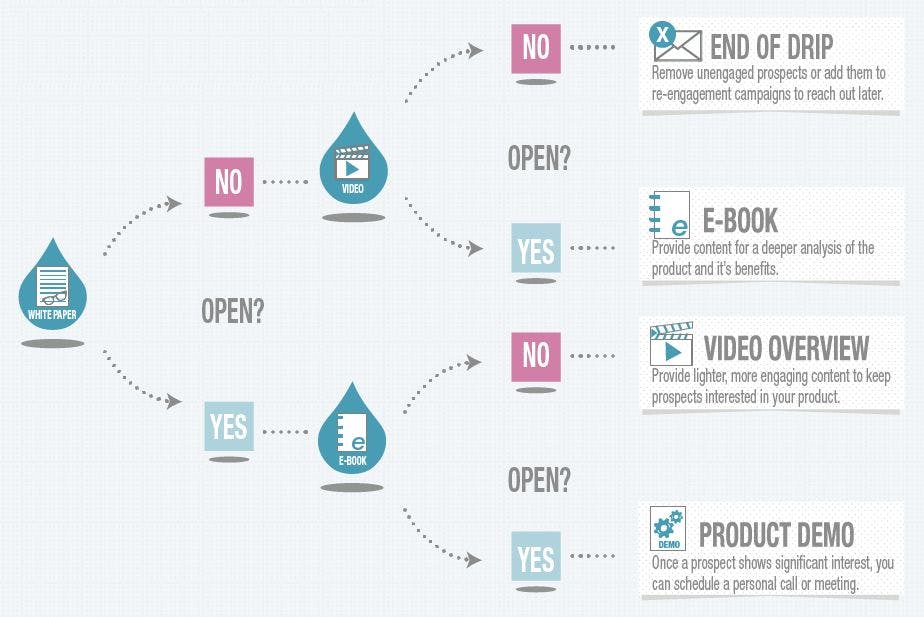
Not only does email automation software set up and dispatch drip campaigns, but it also tracks open rates and engagement stats for each message.
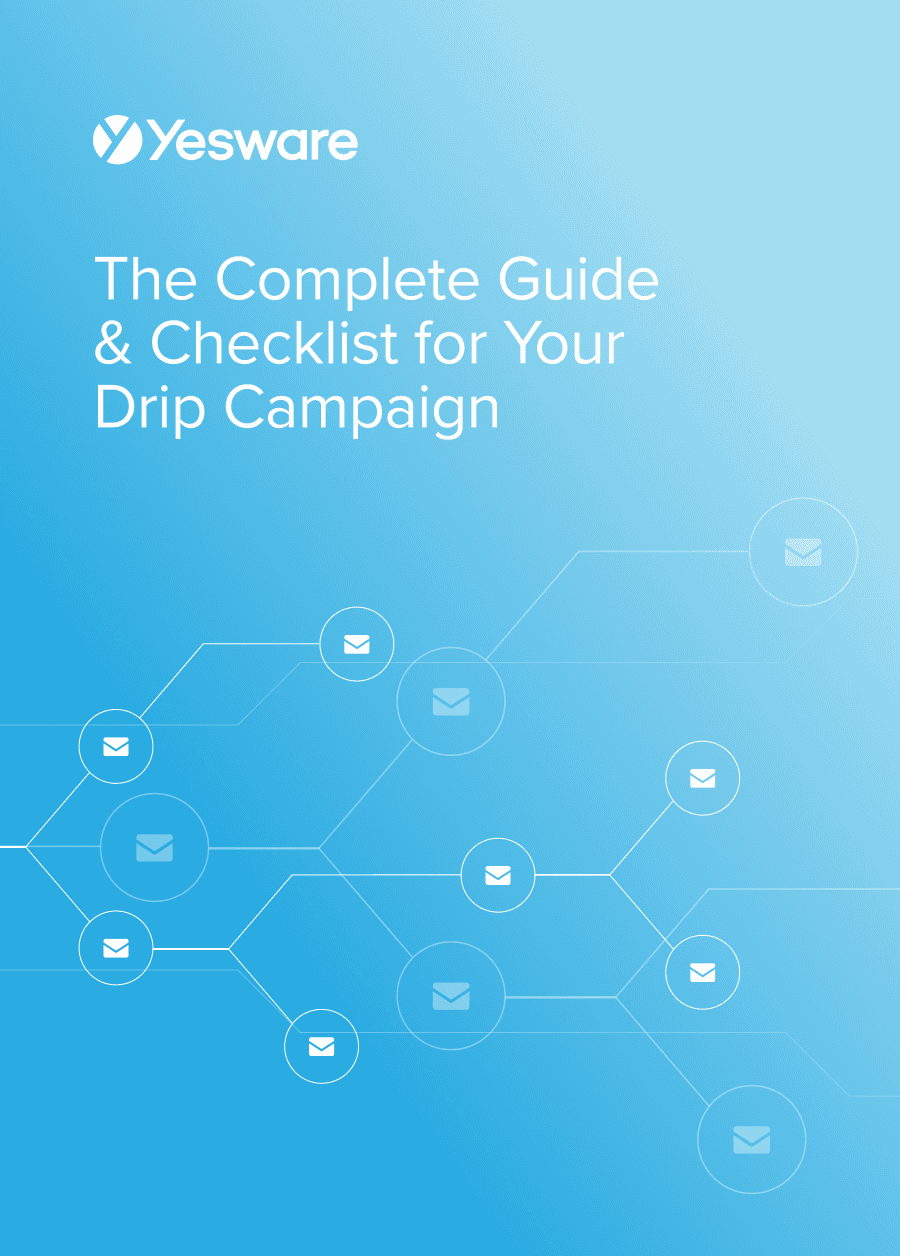 The Complete Guide & Checklist for Your Drip CampaignAn all-in-one guide for creating drip campaigns that improve your conversion rates across all stages of the sales funnel.
The Complete Guide & Checklist for Your Drip CampaignAn all-in-one guide for creating drip campaigns that improve your conversion rates across all stages of the sales funnel.
Nurture as Much as You Sell
Speaking of drip campaigns, make sure you use your email automation software to design a sequence for good-fit prospects that need more time to decide.
Email automation allows sellers the bandwidth to stay in touch with and nurture prospects that will likely buy — but only on their own time. Without email automation, these leads would often fall by the wayside.
Track Responses and Engagement
One of the biggest advantages of using email automation in your sales process is that it gives you the ability to track and analyze your outreach efforts.
It’s important, though, that your sales and marketing teams carve out time to actually look at the data the platform provides. The software can easily provide insights, but it’s up to the sales team to create actionable strategies from those insights.
Always Include a CTA
Email automation is a truly fantastic sales strategy, but the truth is that email outreach can only get you so far in the sales cycle. The best salespeople know that they need to leverage their email outreach to propel the process forward.
That’s where calls to action (CTAs) come in.
All of your automated emails should include a CTA. This could be as simple as linking to your company’s blog, or as high-stakes as requesting the decision-maker book into a meeting on your calendar.
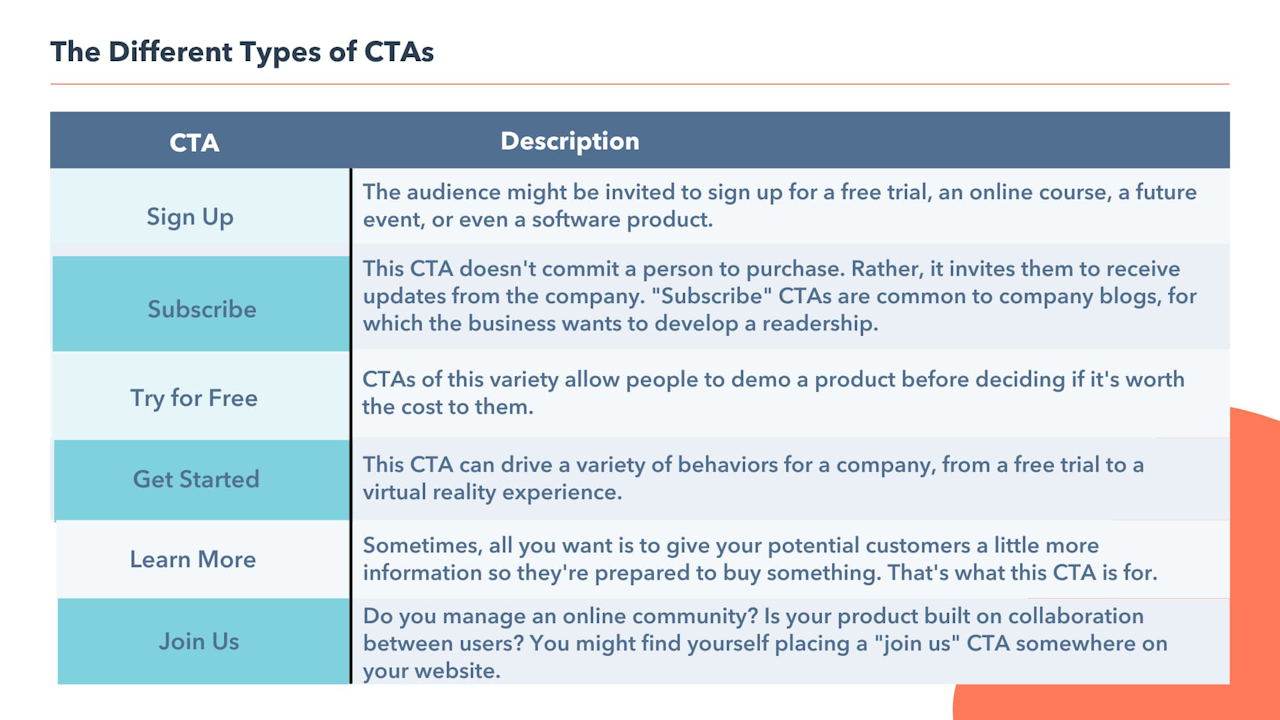
It’s up to your sales and marketing teams to decide what CTA strategy makes the most sense for each email and campaign, but the idea here is to treat your automated emails like a stepping stone in a larger, predetermined path within the sales funnel.
8 Automated Email Flows to Use
There are virtually limitless use cases for email automation, but there is a handful that reliably come in handy for sales teams.
Here’s a look at some of the most commonly used email flows to use with your email automation strategy.
1. New Subscribers
When a prospect opts to provide their contact information to you, it’s a good idea to send them an automated welcome sequence.
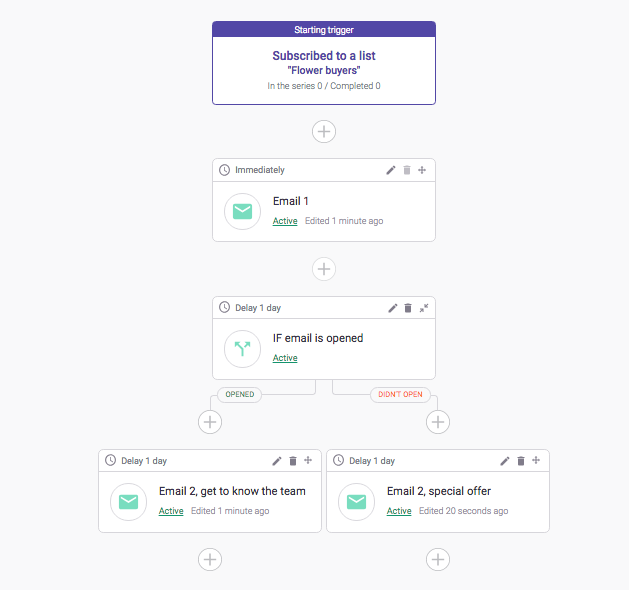
The exact cadence and content of a welcome sequence will be designed according to your team’s goals and strategy. Many marketers and salespeople use them as an opportunity to offer a small discount or bonus, or introduce the recipient to the product and the team.
2. Cart/Browse Abandonment
Many prospecting software platforms can help salespeople “peek into” the way prospects interact with your website.
Salespeople can use email automation to reach out to customers that spent time on your website or put items in a cart but then abandoned the activity.
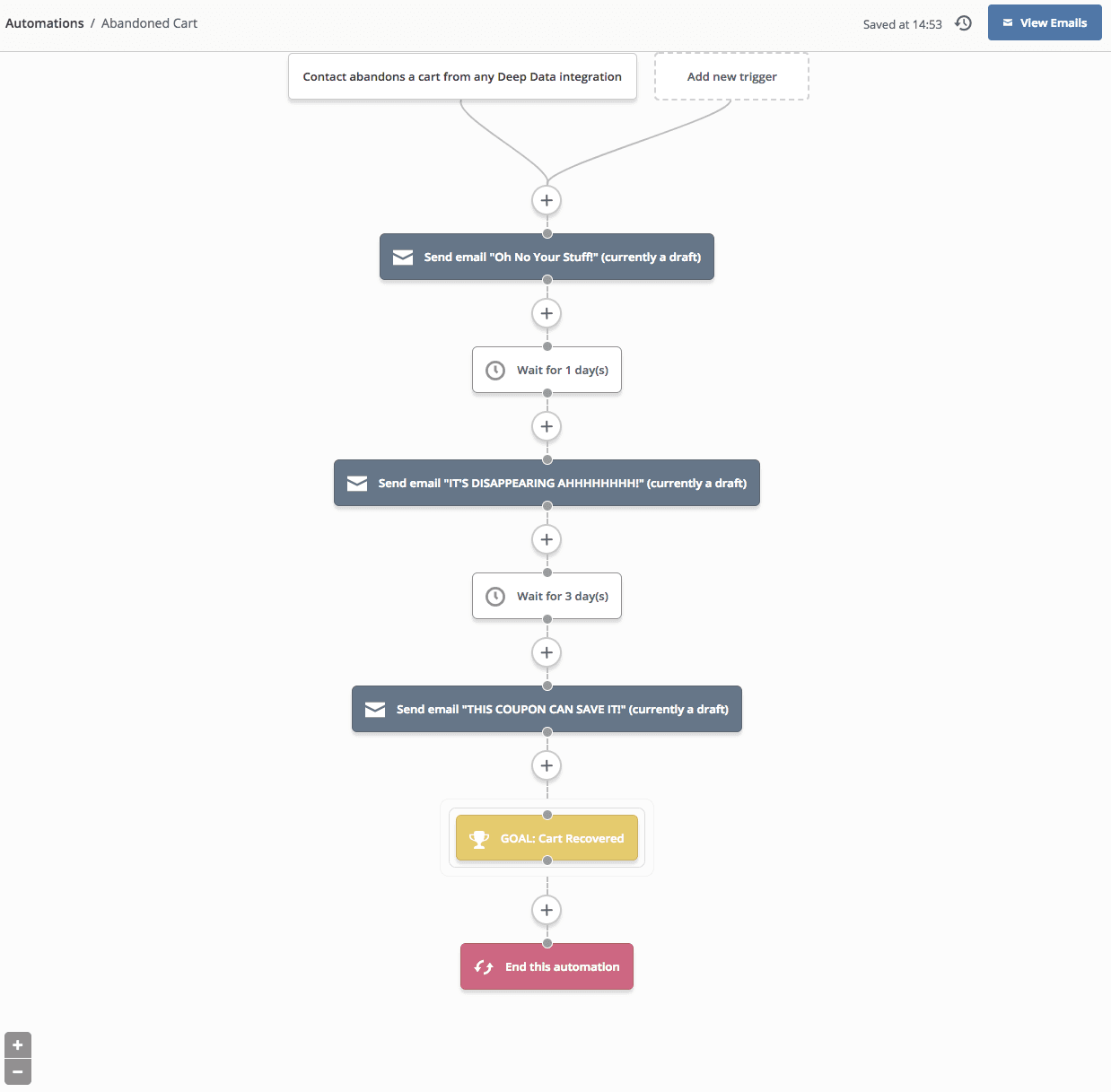
An automated email is an easy way to re-engage the prospects and begin a conversation with them.
3. Automated Blog Updates/Newsletter
If your organization has a blog that’s regularly updated, email automation can be a huge asset in getting eyes on your posts.
You can also use email automation to send periodic newsletters to consistently provide value and keep your subscribers engaged.
4. Nurture Sequence
In today’s sales world, buyers prefer to do most of their research before they make contact with a salesperson. That’s one reason why every sales team needs at least one targeted nurture sequence.
A nurture sequence is a series of emails that are designed to keep prospects engaged with your brand, without pressure to purchase at a certain time. It’s okay to promote your product, but the point of the sequence is to continue to add value without the more traditional sales conversation on the agenda.
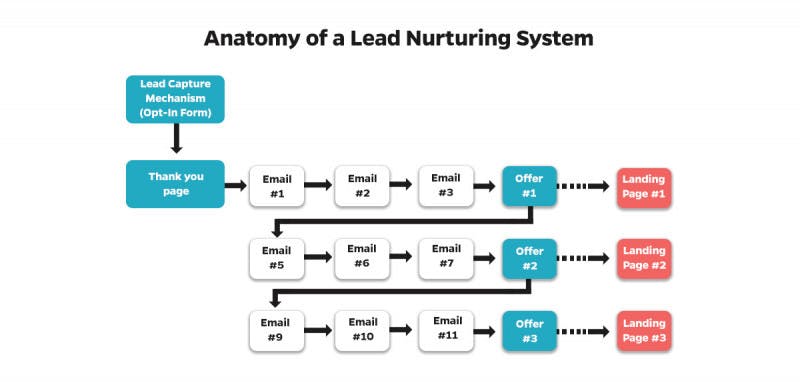
Email automation is extremely useful for building nurture sequences. They allow salespeople to take care of prospects who will most likely say yes, eventually, while prioritizing leads who are ready to say yes sooner.
5. Promotions or Discounts
Salespeople and marketers can also use email automation to send regularly-scheduled promotions or deals to their lead list and customer base.
If, for example, your organization has a Memorial Day sale every year, email automation can help you schedule, send, and track the promotional offer so you can keep business running as usual.
6. Auto Reply for Complaints or Concerns
There’s no faster way to annoy a prospect or customer than to give them the impression that their concerns have fallen on deaf ears.
If you invite customer feedback into your sales process, make sure you have a way to acknowledge their concerns promptly. Email automation can help sales reps set up autoresponders for anyone who submits a concern or complaint.
Of course, the auto-response should not replace person-to-person contact. The automated email is a stop-gap measure, meant to assure the sender that their concern has been received until it can be properly addressed by a real person. It’s important that a sales or customer success rep follows up with the concern after the autoreply.
7. Re-Engagement
Similar to a nurture sequence, an automated re-engagement sequence can help engage leads who aren’t quite ready to buy.
The main difference between the two is that a nurture sequence is typically sent to leads who are still warm; a re-engagement series can be used to target leads who went cold for any number of reasons but did not outright say no.
8. Follow-ups
Every salesperson worth their salt knows how important it is to stay on top of the follow-up. It takes some leads as many as four follow-ups before they say yes.
With existing prospects requiring 4+ outreach efforts, and new leads coming into the pipeline every day, it can be nearly impossible to manage it all. Email automation can easily handle the scheduling jigsawing required to stay on top of following up with every prospect.
Here’s an example of automating follow-ups to go out when prospects don’t respond to your previous outreach using Yesware Campaigns.
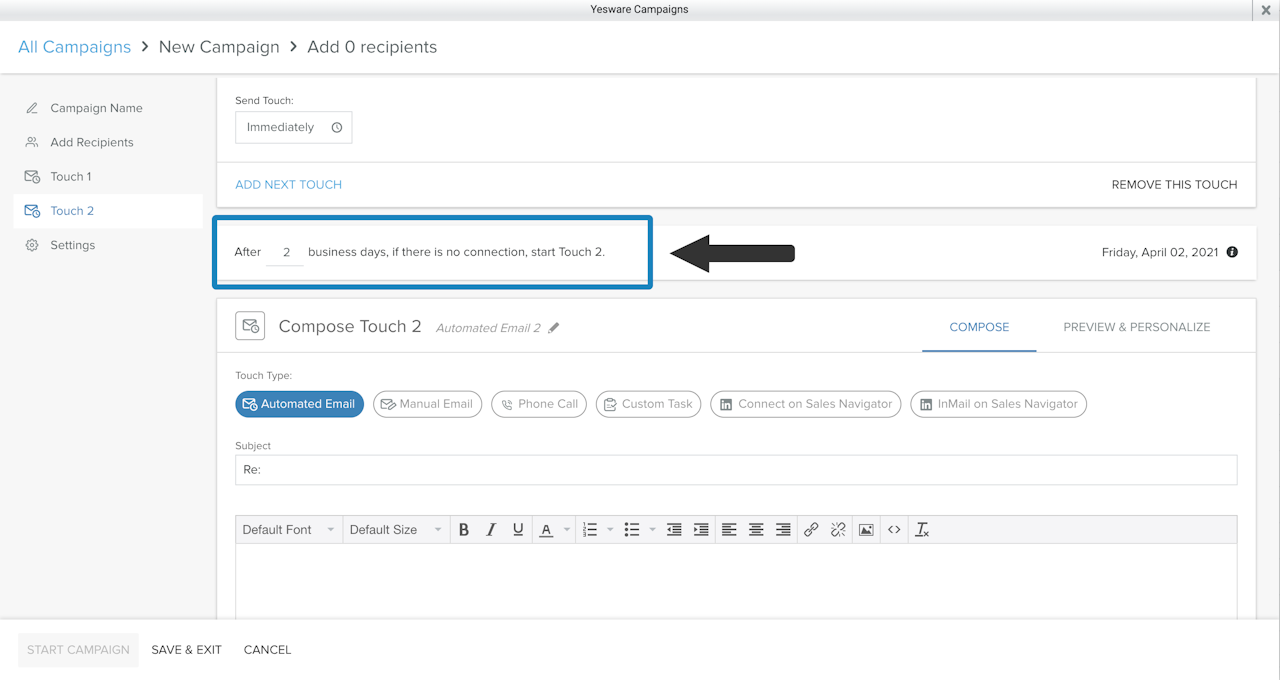
Email Automation FAQ
Although email automation is extremely prevalent in today’s sales world, there are still a surprising number of misconceptions about how it’s used.
Here are some answers to some of our most commonly asked email automation FAQs.
What’s the difference between email marketing and email automation?
Email marketing is simply the term used to describe reaching your target audience via email. And email marketing tools will often track user activity and responses, but most cannot schedule emails, save templates, or auto-update your calendar.
Email automation, on the other hand, handles all of the tasks of email marketing and then some. Email automation allows users to save, schedule, and auto-send strategically-created emails that strengthen the brand message and attract new customers.
What is an email automation flow?
An email automation flow (also sometimes called a “workflow”) is the term used to describe a specific automation email sequence. A workflow can be as succinct as a single email, or as complex as you can imagine.
Workflows come in all shapes and sizes because they are meant to cater to a variety of different audiences. A sales team may have a workflow for Northeast hot leads, another for Northeast nurture leads, and yet another for Southwest follow-ups.
Each email automation flow has its own set of rules, triggers, and recipients that determine how it will be deployed.
Can I change my workflows once they’re set up?
Yes! Many tools, like Yesware, allow unlimited personalization, additions, and changes to a workflow once it’s created. This gives sellers maximum flexibility in reaching their target audience.
How personalized can my automated emails really get?
It depends on the email automation software you’re using. Nearly all platforms allow users to autofill a recipient’s name, but some of the better ones will also allow for highly customized links, talking points, or attachments.
Ready to Automate Your Email Workflow?
Yesware is the email automation tool for meaningful, personalized outreach at scale. Our features include:
- Email templates
- Email tracking
- Multi-channel campaigns with calls and social touches
- Attachment tracking
- Robust reporting and analytics
Sales reps who use Yesware report a whopping 48% higher connect rate, 2x more meetings, and 20% higher sales.
Get sales tips and strategies delivered straight to your inbox.
Yesware will help you generate more sales right from your inbox. Try our Outlook add-on or Gmail Chrome extension for free, forever!
Related Articles
Jenny Keohane
Jenny Keohane
Melissa Williams
Sales, deal management, and communication tips for your inbox

